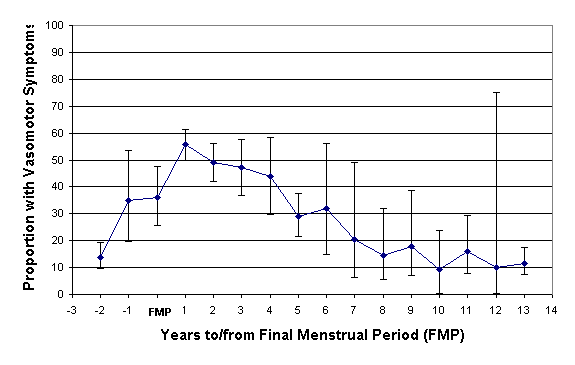|
||||
Monday, October 22, 2007
P2-3
HOW LONG DO MENOPAUSAL SYMPTOMS LAST? A SEQUENTIAL META ANALYSIS
Method: We searched MEDLINE for all population-based studies reporting the prevalence of vasomotor symptoms among women in menopausal transition. Data were abstracted from studies reporting vasomotor symptom prevalence in time intervals based on years to/from final menstrual period (FMP). We pooled data across studies using meta-analytic techniques for each one-year interval using the random effects model of DerSimonian and Laird.
Results: Our analyses included 10 studies (3 longitudinal, 7 cross sectional) with 35,445 participants. The percentage of women experiencing symptoms increased sharply in the 2 years prior to FMP, peaked one year after FMP, and did not return to premenopausal levels until about 8 years after FMP (Figure). Nearly 50% of women reported vasomotor symptoms 4 years after FMP, and 10% reported symptoms as far as 12 years after FMP.
Conclusions: Our findings suggest an average symptom duration far greater than 2 years among symptomatic women. Although we could not directly calculate symptom duration, this novel method of sequentially pooling prevalence across studies provides comprehensive time series data that can be used to impute duration. A longer symptom duration may affect treatment decisions and clinical guidelines.


